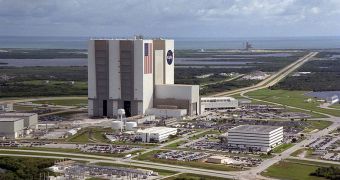Since the John F. Kennedy Space Center (KSC) was first built, the facility has been more often than not focused on fulfilling a single project. First, it was the Apollo Program, then the Space Shuttle Program, and the Project Constellation. But officials at the Center say that the days when this has been the norm need to end. Top representatives say that they can no longer afford to have their workers threatened by the unplanned cancellation of initiatives such as Constellation, which can leave thousands jobless, Space reports.
“What we don't want to be in the future is tied to any one large program. We want to spread the wealth a little bit, so that when these programs come and go, it doesn't impact us in the community or at the space center so much,” Bob Cabana, who is the current director of the KSC, explained recently at a conference. He spoke in front of about 300 colleagues, analysts, and other space-industry representatives, during the monthly lunch meeting of the National Space Club Florida Committee. He explained that the last shuttle was planned to take off from Launch Pad 39A at the spaceport in November, after which the Shuttle Program would be terminated.
He mentioned, however, that there was a chance the last flight would take place in early 2011, rather than this autumn. If additional funding is approved by the federal government, NASA could also send an additional mission to the International Space Station (ISS), thus raising the number of remaining flights to three. But this schedule is unclear, as a large number of factors depend on its success. Most likely, Endeavor's flight will be the last, and it will be conducted as Atlantis is also on stand-by, in the event of an accident.
At that point, the KSC needed to orient itself towards expanding and developing its capabilities, Cabana explained. He added that the federal government promised some $2 billion over the next five years, to aid with the reconversion of the NASA facility, and also to halt the demolition of the Launch Pad 39B facility. The Center could be used for manned and unmanned rocket launches, by both the government and the private space industry. “If we do it right and the money's there, we can actually end up with more work further down the road. We'll have something that's sustainable, and we'll be better off in the end,” the representative concluded.

 14 DAY TRIAL //
14 DAY TRIAL //